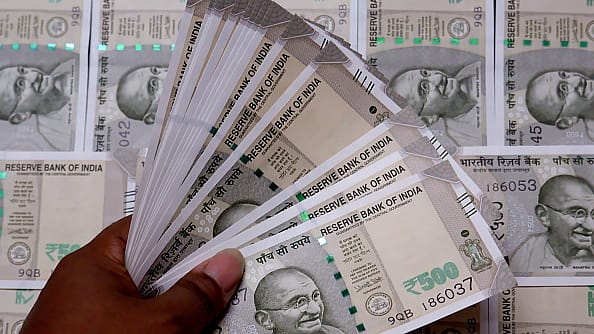Rupee just shy of 80 against USD; FM explains why
ADVERTISEMENT

Finance minister Nirmala Sitharaman acknowledged in Parliament today that the Indian rupee has fallen to a record low in comparison to the U.S. dollar during the month of June 2022. The rupee is at the lowest level of ₹79.97 against the U.S. dollar currently. The domestic currency had opened with a 6 paise gain over the U.S. dollar at ₹79.76 but soon lost ground on worries over continuous forex outflows, surge in crude oil prices and risk rallies in broader global markets.
While answering a question by members Deepak Baij and Vijaykumar (Alias) Vijay Vasanth, the FM stated that global factors like the Russia-Ukraine conflict, soaring crude oil prices and the tightening of global financial conditions are the major reasons for the weakening of the Indian rupee against the U.S. dollar. "The exchange rate of the Indian Rupee against the dollar was ₹78.94 per dollar as of June 30, 2022," she says.
However, Sitharaman says that other currencies such as the British pound, the Japanese yen and the Euro have weakened more than the Indian rupee against the U.S. dollar and therefore, the Indian rupee has strengthened against these currencies in 2022.
December 2025
The annual Fortune 500 India list, the definitive compendium of corporate performance, is out. This year, the cumulative revenue of the Fortune 500 India companies has breached $2 trillion for the first time. Plus, find out which are the Best B-schools in India.
On whether the depreciation in the Indian rupee has caused the huge flow of money from abroad to India, the finance minister says the outflow of foreign portfolio capital is a "major reason" for the "depreciation" of the Indian rupee. "Monetary tightening in advanced economies, particularly in the United States of America, tends to cause foreign investors to withdraw funds from emerging markets. Foreign portfolio investors have withdrawn about $14 bn from Indian equity markets in FY 2022-23 so far," she adds.
Giving further details, the FM shares the RBI data, which shows the rupee has fallen against the USD from 63.33 in 2014 to 79.41 on July 11, 2022. On whether any review or study has been made by the government to assess its impact on the Indian economy, the finance minister stated that the nominal exchange rate is only one of the factors that impact an economy.
"The depreciation of a currency is likely to enhance the export competitiveness which in turn impacts the economy positively. The depreciation also impacts the imports by making them more costly."
She says the Reserve Bank of India (RBI) regularly monitors the foreign exchange market and intervenes in situations of excess volatility. "The Reserve Bank of India has raised interest rates in recent months that increase the attractiveness of holding Indian rupees for residents and non-residents," she adds.
The RBI has taken a series of measures to manage the rupee. One of the measures taken by the RBI was the exemption of incremental foreign currency non-resident (bank) and non-resident (external) rupee deposits from the maintenance of CRR (cash reserve ratio) and SLR (statutory liquidity ratio) up to November 4, 2022. The RBI had also exempted fresh FCNR(B) and NRE deposits from the extant regulation on interest rates. This would allow banks to provide higher interest rates till October 31, 2022, than those offered to comparable domestic rupee term deposits to attract foreign currency deposits.
The RBI has also allowed revision of the regulatory regime relating to foreign portfolio investment in debt flows to encourage foreign investment in Indian debt instruments. It has also raised the external commercial borrowing limit (under automatic route) to $1.5 billion and the all-in-cost ceiling by 100 bps in select cases up to December 31, 2022.
Foreign brokerage Nomura expects the Indian rupee to fall to 82 against the dollar by the third quarter of 2022 amid unrelenting capital outflows and a widening trade deficit. Nomura expects the local currency to rise to 81 in the fourth quarter.
